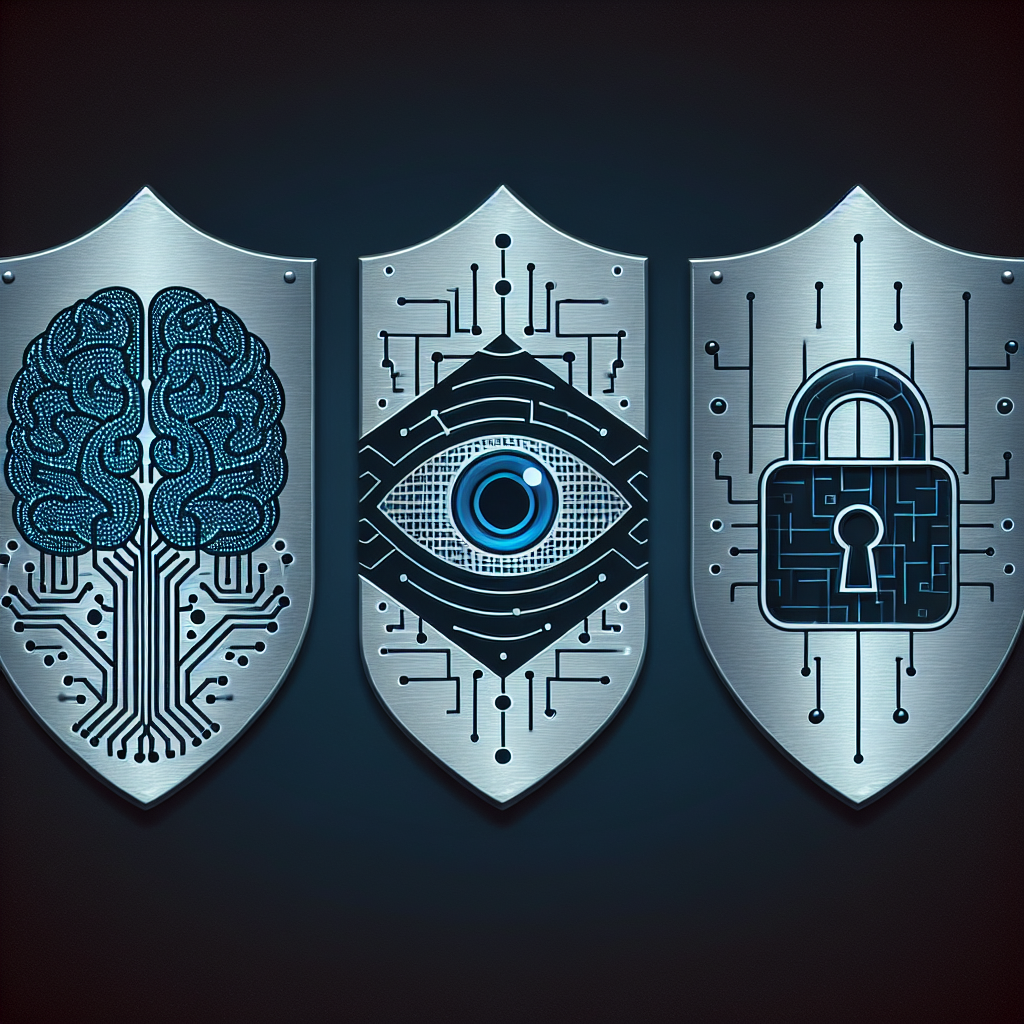In today’s digital age, the intersection of artificial intelligence (AI), privacy, and cybersecurity has become increasingly complex and important. As AI technology continues to advance, it is being used in a wide range of applications, from personal assistants like Siri and Alexa to self-driving cars and predictive analytics in healthcare. While AI has the potential to greatly benefit society, it also raises important questions and challenges related to privacy and cybersecurity.
AI technologies often require access to large amounts of data to function effectively. This raises concerns about the privacy of individuals’ personal information, as well as the potential for that data to be misused or hacked by cybercriminals. At the same time, AI itself can also be used to enhance cybersecurity measures and protect against cyber threats.
In this article, we will explore the intersection of AI, privacy, and cybersecurity, examining the benefits and challenges of these technologies working together. We will also discuss some common questions and concerns related to this topic.
Benefits of AI in Privacy and Cybersecurity
AI has the potential to greatly improve privacy and cybersecurity measures in a number of ways. One of the key benefits of AI is its ability to analyze large amounts of data quickly and accurately. This can be used to detect patterns and anomalies that may indicate a potential security threat or privacy breach.
For example, AI algorithms can be trained to detect unusual behavior on a network that may indicate a cyber attack, such as a sudden increase in data traffic or unauthorized access to sensitive information. Similarly, AI can be used to analyze user behavior and detect suspicious activity that may indicate a privacy violation, such as unauthorized access to personal data.
AI can also be used to automate and streamline cybersecurity processes, making it easier for organizations to detect and respond to threats in real-time. For example, AI-powered security systems can automatically block suspicious IP addresses or quarantine infected devices, reducing the risk of a cyber attack spreading throughout a network.
Challenges of AI in Privacy and Cybersecurity
While AI has the potential to enhance privacy and cybersecurity measures, it also raises important challenges and concerns. One of the main challenges is the potential for AI algorithms to make mistakes or be manipulated by malicious actors. For example, AI algorithms may inadvertently flag legitimate behavior as suspicious, leading to false alarms and unnecessary security measures.
There is also the risk of bias in AI algorithms, which can result in discriminatory outcomes or privacy violations. For example, a facial recognition system that is trained on a dataset that is not representative of the population may be more likely to misidentify individuals from certain demographic groups.
Another challenge is the increasing sophistication of cyber attacks, which are becoming more difficult to detect and defend against. Cybercriminals are using AI technologies themselves to launch more targeted and sophisticated attacks, making it harder for traditional cybersecurity measures to keep up.
Common Questions and Concerns
1. How does AI impact privacy rights?
AI can have both positive and negative impacts on privacy rights. On one hand, AI technologies can be used to enhance privacy measures by detecting and preventing data breaches and unauthorized access to personal information. On the other hand, AI also has the potential to infringe on privacy rights by collecting and analyzing large amounts of personal data without consent, or by making decisions that may have harmful consequences for individuals.
2. How can organizations ensure that AI systems are secure and protect privacy?
Organizations can take a number of steps to ensure that AI systems are secure and protect privacy. This includes implementing strong encryption measures to protect data, regularly updating and patching AI algorithms to address vulnerabilities, and conducting regular security audits to identify and address potential risks. Organizations should also ensure that they are compliant with relevant data protection regulations, such as the General Data Protection Regulation (GDPR) in Europe.
3. How can individuals protect their privacy in an AI-driven world?
Individuals can take steps to protect their privacy in an AI-driven world by being mindful of the personal information they share online, using strong passwords and security measures on their devices, and being cautious about the types of AI-powered technologies they use. It is also important for individuals to stay informed about data privacy issues and advocate for stronger data protection laws and regulations.
4. How can AI be used to enhance cybersecurity measures?
AI can be used to enhance cybersecurity measures in a number of ways. This includes using AI algorithms to detect and respond to cyber threats in real-time, analyzing network traffic to identify potential vulnerabilities, and automating security processes to reduce the risk of human error. AI can also be used to improve the accuracy and efficiency of threat intelligence and incident response efforts.
In conclusion, the intersection of AI, privacy, and cybersecurity presents both opportunities and challenges for society. While AI has the potential to greatly enhance privacy and cybersecurity measures, it also raises important questions and concerns related to data protection, bias, and the evolving nature of cyber threats. By being mindful of these issues and taking proactive steps to address them, we can harness the power of AI technology while also protecting privacy rights and enhancing cybersecurity measures.

